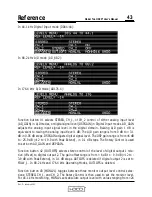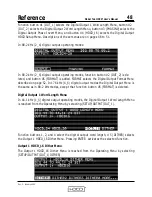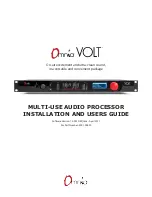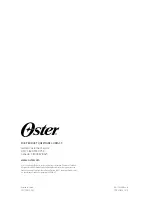
®
I N C .
P A C I F I C
M I C R O S O N I C S
37
Setup & Operation
Model Two HDCD
®
User’s Manual
Rev. C - January 2002
HDCD 16-bit Dithers
From the Operating Menu select (SETUP/OUTPUT/OUT_1 or OUT_2/DITHER or MORE...).
HDCD 16-bit dither options allow optimizing perceived timbral and spacial accuracy with
different types of source material during HDCD 16-bit A/D conversion, or when converting
24-bit or 20-bit signals to HDCD 16-bit.
The dither options are: DITHER1, DITHER2, DITHER3, DITHER0, ROCK_1, ROCK_2, and
ROCK_3.
DITHER1 is usually preferred with most source material, and provides both excellent clarity
and accurate timbre. DITHER1 is the default dither selected by the factory presets.
DITHER2 and DITHER3 produce subtle alterations in timbre and spatial “air”, providing a
“palette” of options for different source material.
DITHER0 is the original HDCD 16-bit dither, and has been superceded by mathematical
advances in DITHER1. DITHER0 may still be preferred with some source material, and also
allows matching previously recorded HDCD 16-bit material.
ROCK_1, ROCK_2, and ROCK_3 are designed to be useful for certain types of dense, dis-
torted source material to keep an “edge” to the sound when dithering from 24-bit or 20-bit
signals to HDCD 16-bit. Each has a different “flavor” though they will all distort clean
source material, as they are intentionally designed towards truncation in effect.
Operating Techniques:
Listening to both undecoded as well as decoded 16-bit playback is important, since HDCD
amplitude encoding effects such as Peak Extension limiting are more audible undecoded.
Limited Dynamic Range Pop or Rock
The best method to record highly compressed, limited dynamic range material depends
greatly on the results that are desired with undecoded playback.
Using Peak Extension allows very high average recording levels without “clipping” or gen-
erating “overs”. This approach can be used to get the “hottest” possible sound (almost no
dynamics) during undecoded playback for air play, with decoding restoring normal dynam-
ics for home listening.
However, because Peak Extension limiting has an “easy over” curve that begins to affect
the signal at - 3 dBfs, it usually shouldn’t be used with highly compressed source material
















































